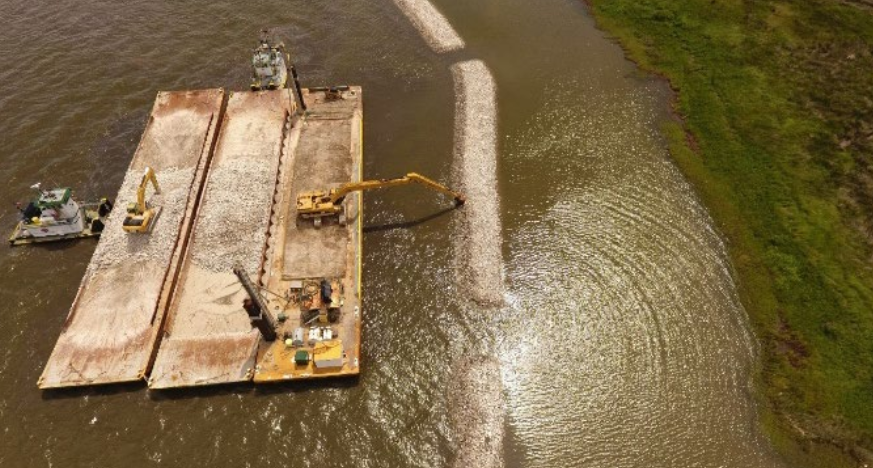Beyond Coastal Restoration: A Strategy for Making the Texas Coast More Resilient
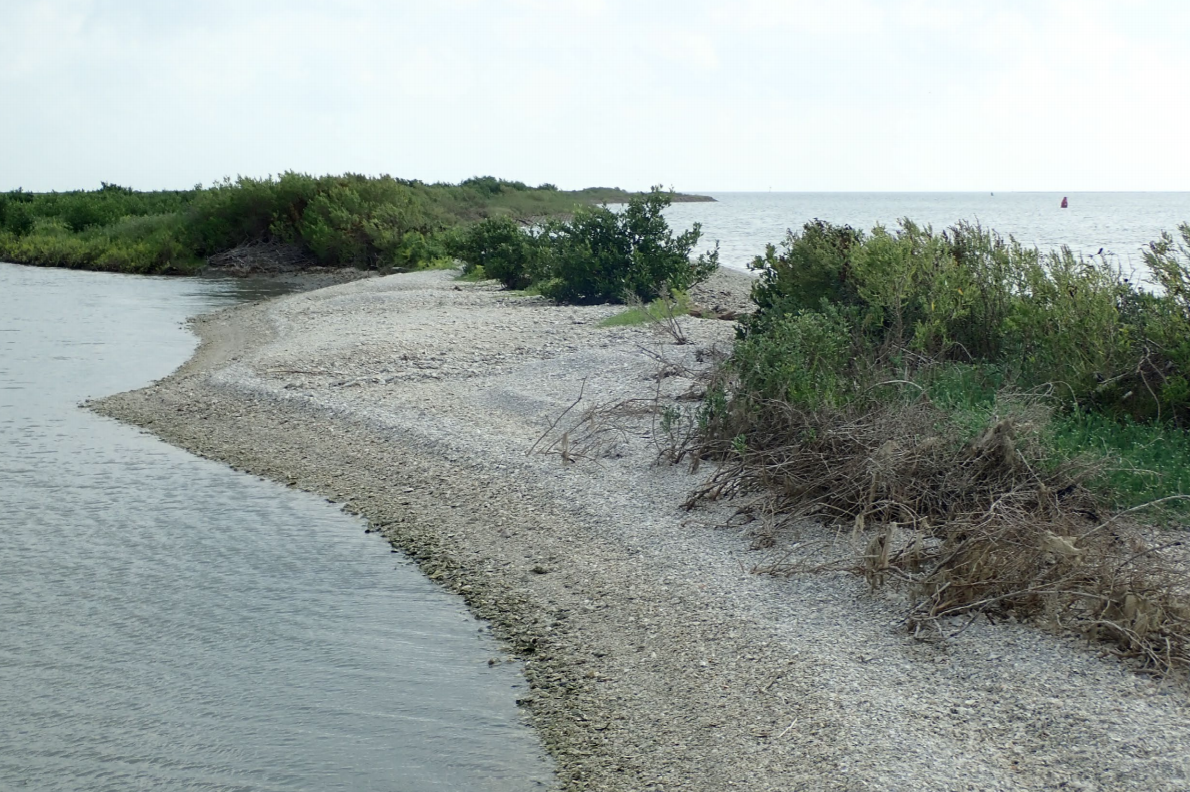
Habitats along the Texas coast face multiple threats, from storms and oil spills to sea level rise and industrial infrastructure. These threats deteriorate shorelines, marshes, and natural barriers, leaving habitats and communities unprotected. While habitat restoration along the Gulf Coast is critical, environmental solutions and management approaches can be designed to protect these coastal areas, both enhancing the habitat and making the Texas coast more resilient in the long run.
Living Shorelines: Enhancing Coastal Resilience
An innovative technique for achieving long-term coastal stabilization is the creation of living shorelines. This management practice protects and stabilizes the shoreline while providing valuable habitat that enhances overall coastal resilience. Living shorelines have many benefits to both the environment and the community.
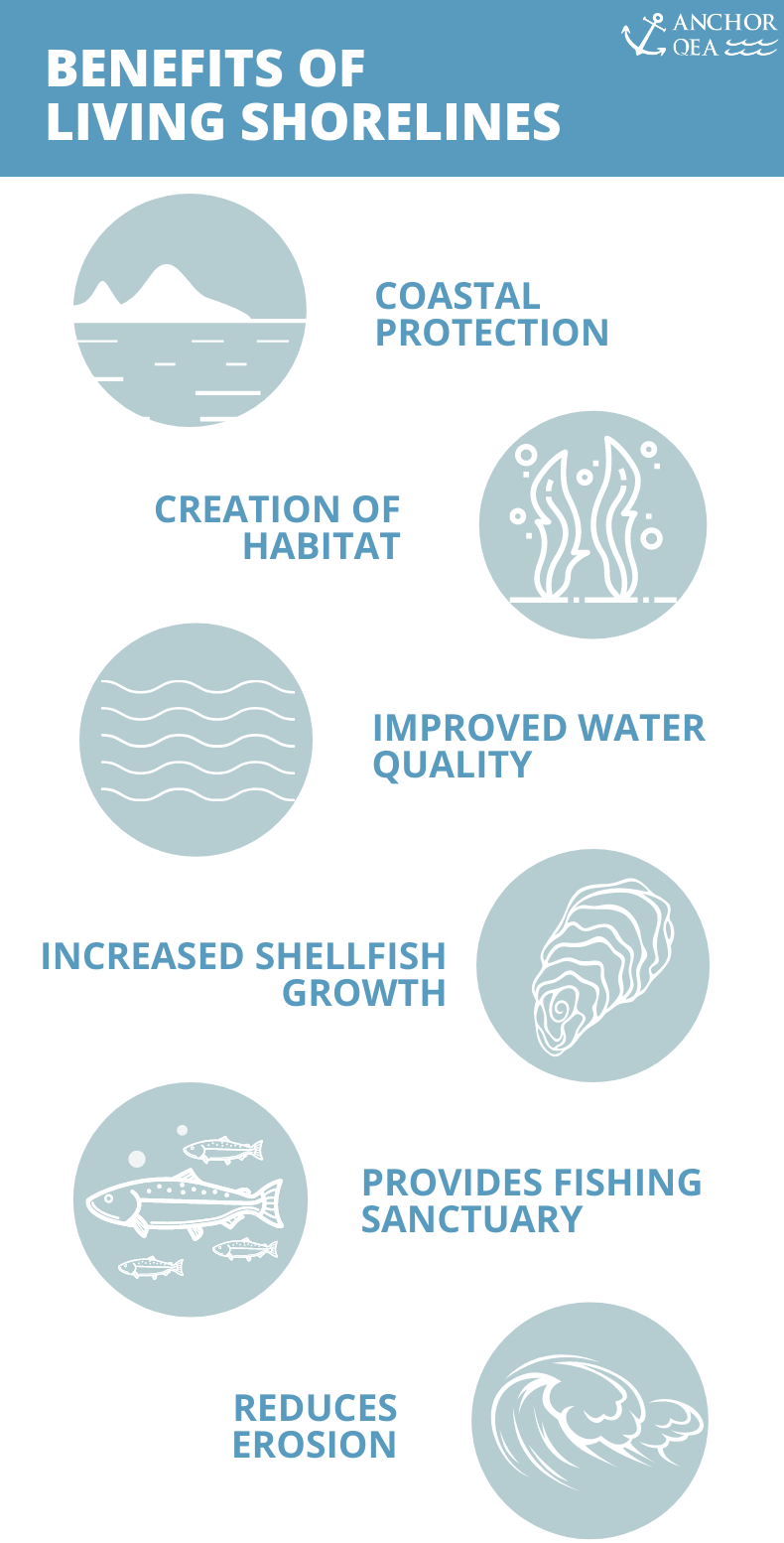
Living shoreline projects typically include using native coastal vegetation (through planting or natural re-vegetation) and usually, but not always, a low-lying wave attenuation structure. These structures can take a variety of forms. For example, they can be offshore rock structures parallel to the shore to break waves or perpendicular to the shoreline to trap sediment to form beaches.
The type of material used to construct these structures can vary greatly, from manufactured materials such as precast and processed concrete products to aquatic materials such as oyster bags. Other natural materials can include anything from rock, coir logs, or even trees and woody stem materials. Infrastructure that is made of materials such as concrete and rock provides additional benefits, such as valuable habitat for oysters, clams, fish, and other organisms.
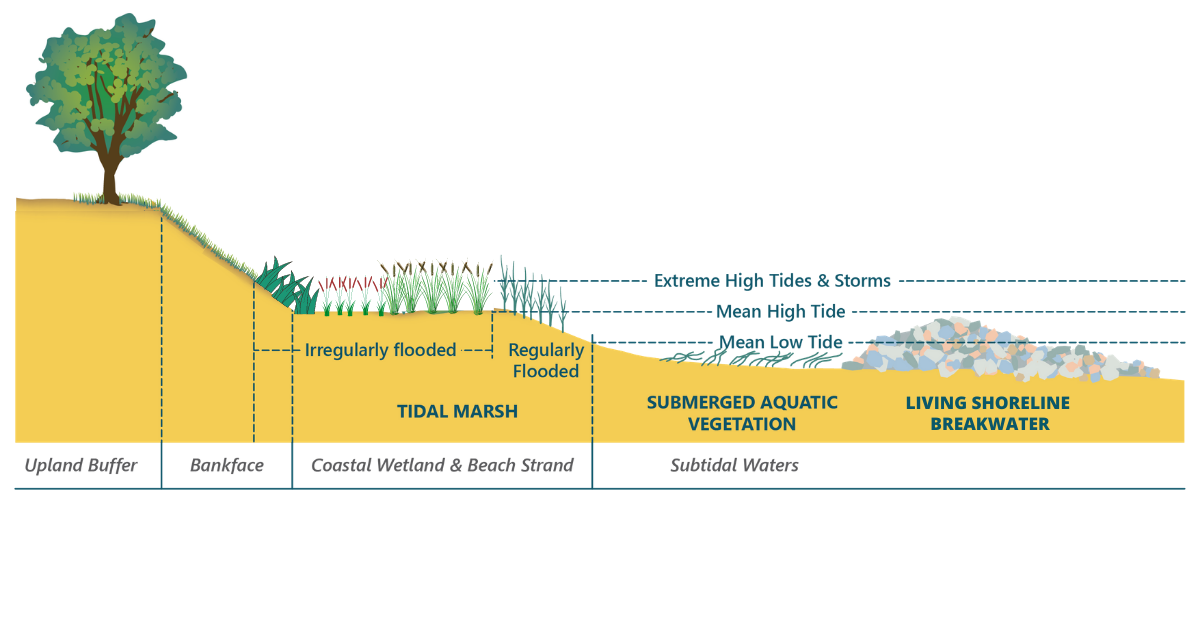
Designing Shoreline Habitats for Long-Term Protection
Anchor QEA has designed and supervised the construction of some of the largest shoreline and wetland restoration and resiliency projects on the Gulf Coast. While every project and design are unique, having a shared vision with each client is crucial for successfully developing a design for any shoreline habitat. To develop a successful shoreline protection design, a complete understanding of the physical and biological processes is critical. Designs may include sediment transport, hydrologic, and hydrodynamic analyses, channel design, wetland site layouts, and planting plans. Once we understand existing conditions and our common goals, we evaluate a variety of factors and approaches to help make decisions about how to achieve habitat protection and restoration.
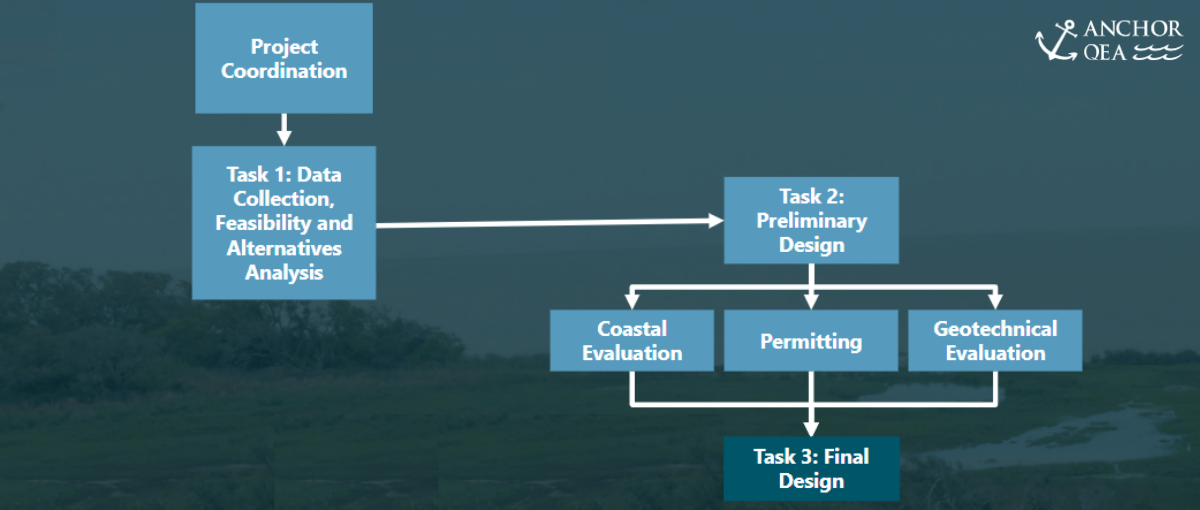
Preserving and Protecting Hancock County Marsh Living Shoreline
In 2015, Hancock County marsh was the fastest eroding marsh in Mississippi, with erosion losses from 3 to 10 feet per year that equals an actual loss of 7 acres of intertidal marsh per year. Anchor QEA is providing engineering design, permitting, and construction assistance for the Deepwater Horizon oil spill related Natural Resource Damage Assessment Phase III Early Restoration Hancock County Marsh Living Shoreline project, an effort to preserve and protect existing habitat while providing shellfish habitat that would increase benthic and shellfish productivity.
Construction of Hancock County Living Shoreline
The NRDA Early Restoration project consists of three restoration components, 6 miles of living shoreline using a segmented rock breakwater, 46 acres of subtidal reef, and approximately 46 acres of marsh. The Anchor QEA team performed detailed geotechnical, wind-wave, and current analyses to locate and design the segmented breakwater, subtidal reef, and marsh components of the project. Our analyses were used to design natural features as well as the low-relief artificial breakwater to reduce shoreline erosion by dampening wave energy. This living shoreline structure design not only achieved reduced wave energy, but re-established habitat along the coastal area, protecting the shoreline and providing aquatic sanctuary for decades to come. Early monitoring results show reduced erosion, sedimentation behind the breakwater and new marsh growth.
Ongoing Resiliency Efforts in the Gulf Coast
Anchor QEA is working on multiple living shoreline projects along the Gulf Coast, restoring and creating resilient coastal habitats and communities. One such project, the Coastal Bend Bays & Estuaries Program’s Dagger Point Coastal and Marine Habitat Protection and Restoration project area, consists primarily of segments of low-lying coastal marshes, low bluffs (between 7 and 9 feet high), and high bluffs (up to 30 feet high) along the Aransas National Wildlife Refuge (ANWR) Blackjack Unit shoreline.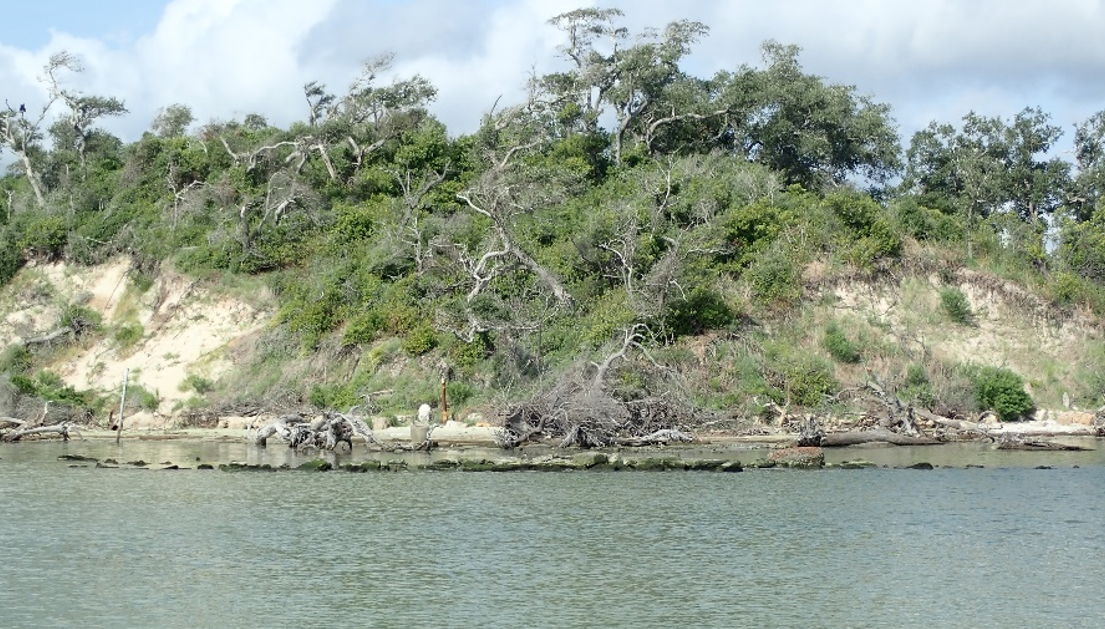
Dagger Point Shoreline
Water and wind are eroding the shoreline, caused primarily by both low-frequency, high-energy storms that drive waves onto the shore and by annual storms, and high-frequency wave action caused by offshore winds. As an example, when Hurricane Harvey made landfall in the area, in 2017, approximately 40 feet of shoreline was lost. Meanwhile, as climate change and relative sea level rise increase, the ANWR shoreline is predicted to become even more vulnerable to erosive forces from low-frequency, high-energy storms.
The goal of the project is to increase coastal resiliency by protecting the shoreline, stabilizing the bluff, and enhancing and creating habitat. To that end, Anchor QEA is developing living shoreline breakwater designs that will decrease wave energy, reduce shoreline erosion, and restore habitat. The protection and creation of this aquatic sanctuary will provide and enhance oyster, other shellfish, and fish habitat; sections of the living shoreline will also serve as bird nesting habitat. In addition to habitat creation, ANWR will continue to be an accessible, beautiful spot for recreational activities like fishing, hiking, and bird watching—a place for the community to come together.
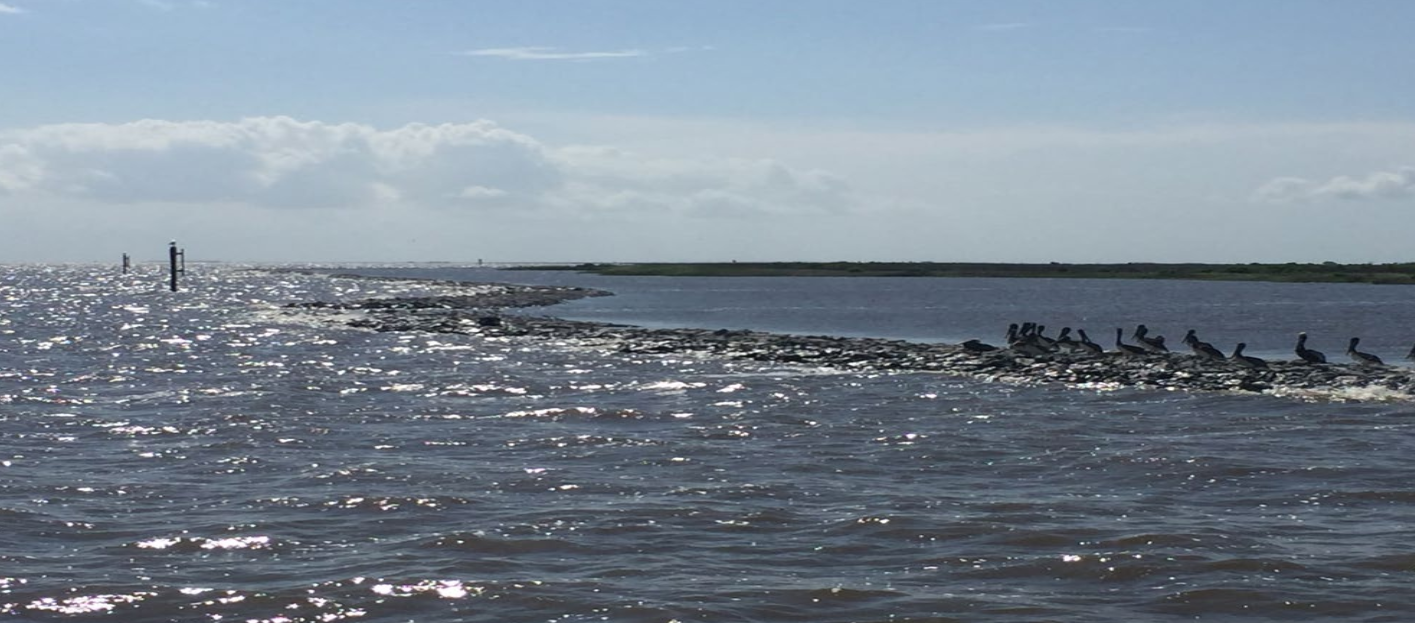
This Anchor QEA-designed living shoreline breakwater decreases erosion and provides shellfish and fish habitat.
Ultimately, living shorelines benefit the coast and protect habitat by reducing wave energy and shoreline erosion, buffering the effects of storms, and even connecting diverse animal habitats. While habitat restoration along the Gulf Coast is critical, implementing strategies such as living shorelines is key to making the Texas coast more resilient in the long run.
The views and conclusions contained in this document are those of the authors and should not be interpreted as representing the opinions, views, policies or an endorsement of the Mississippi Department of Environmental Quality.


